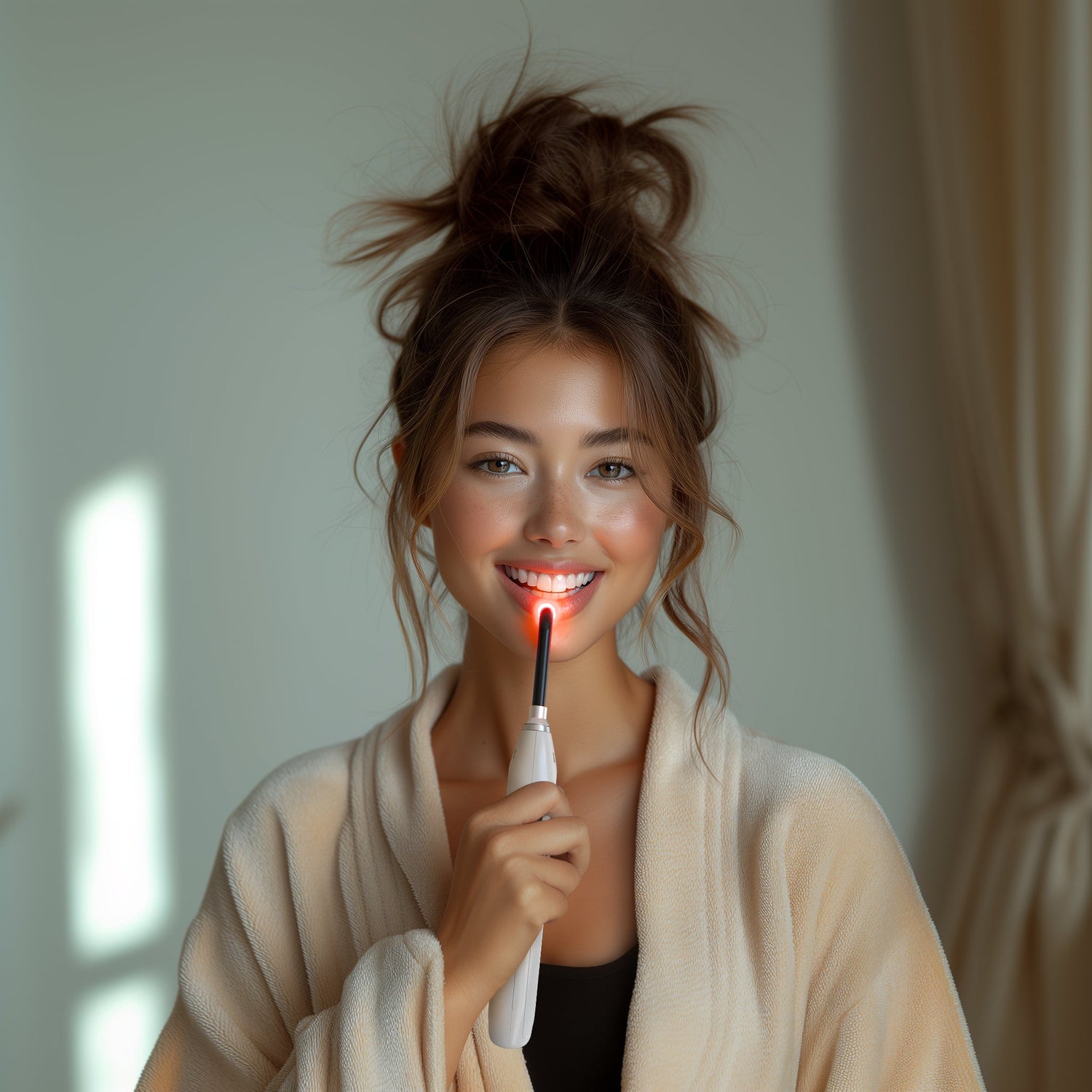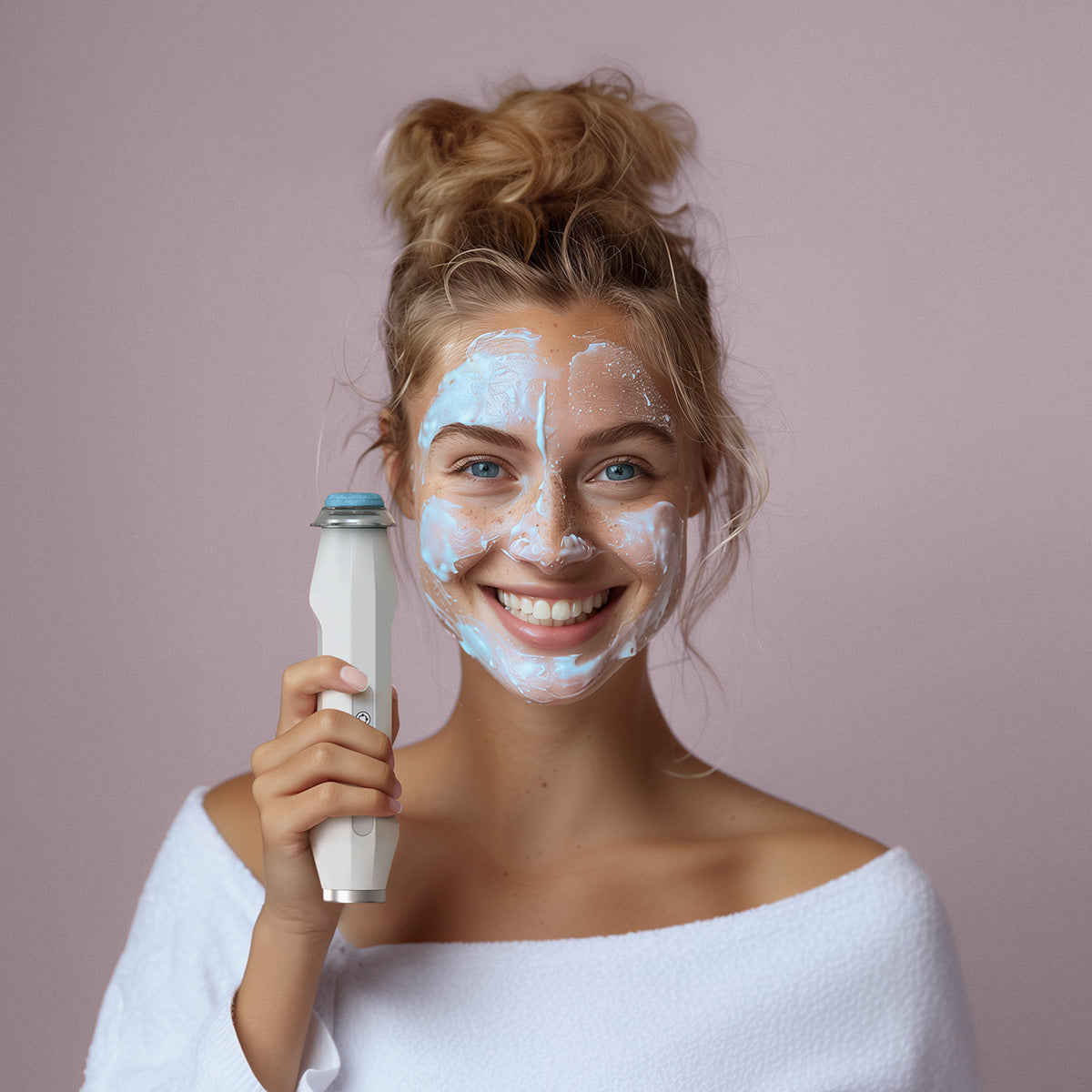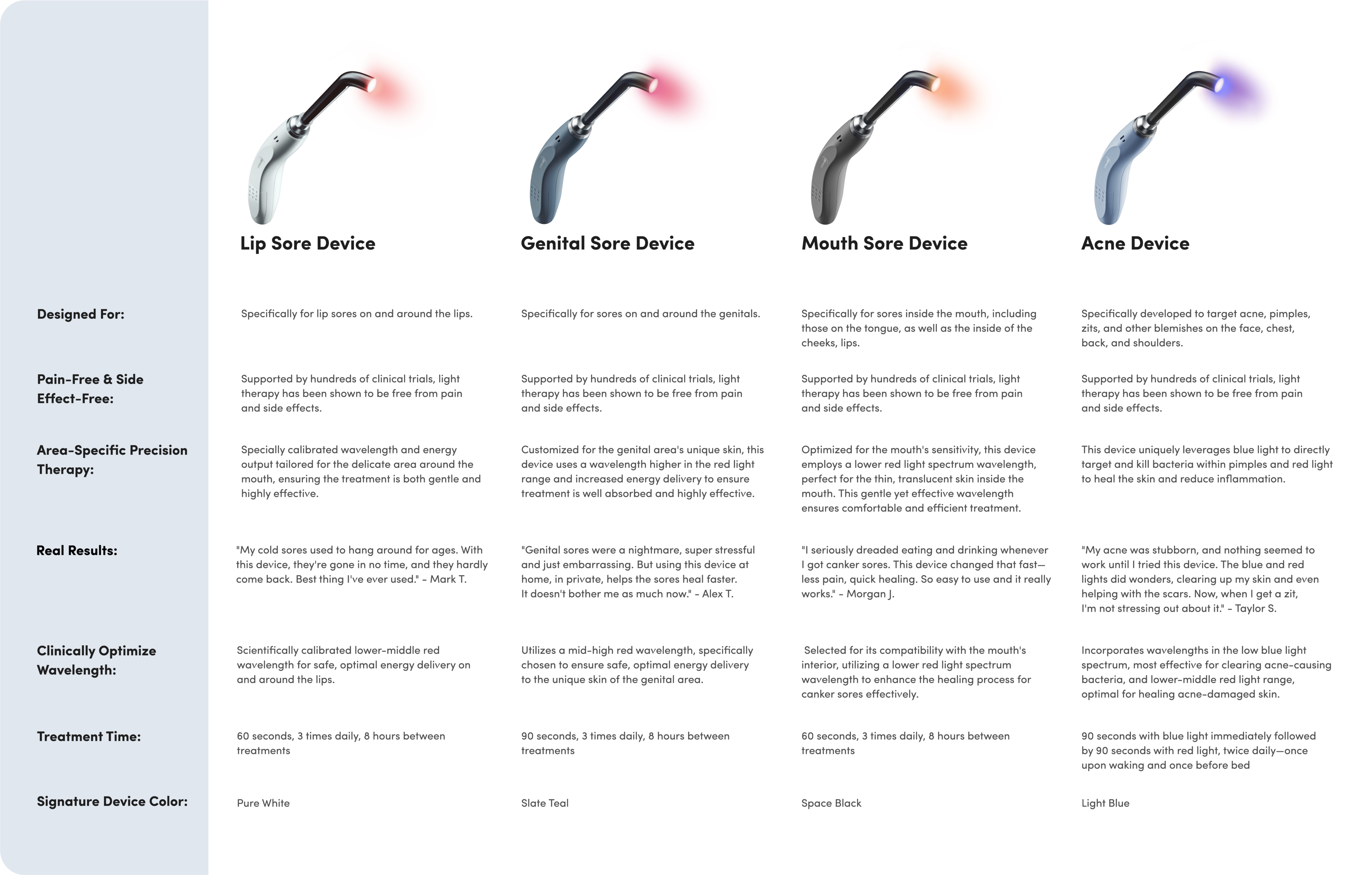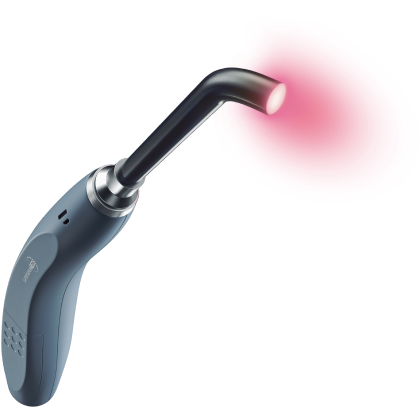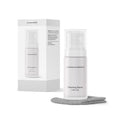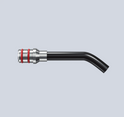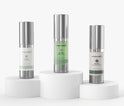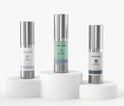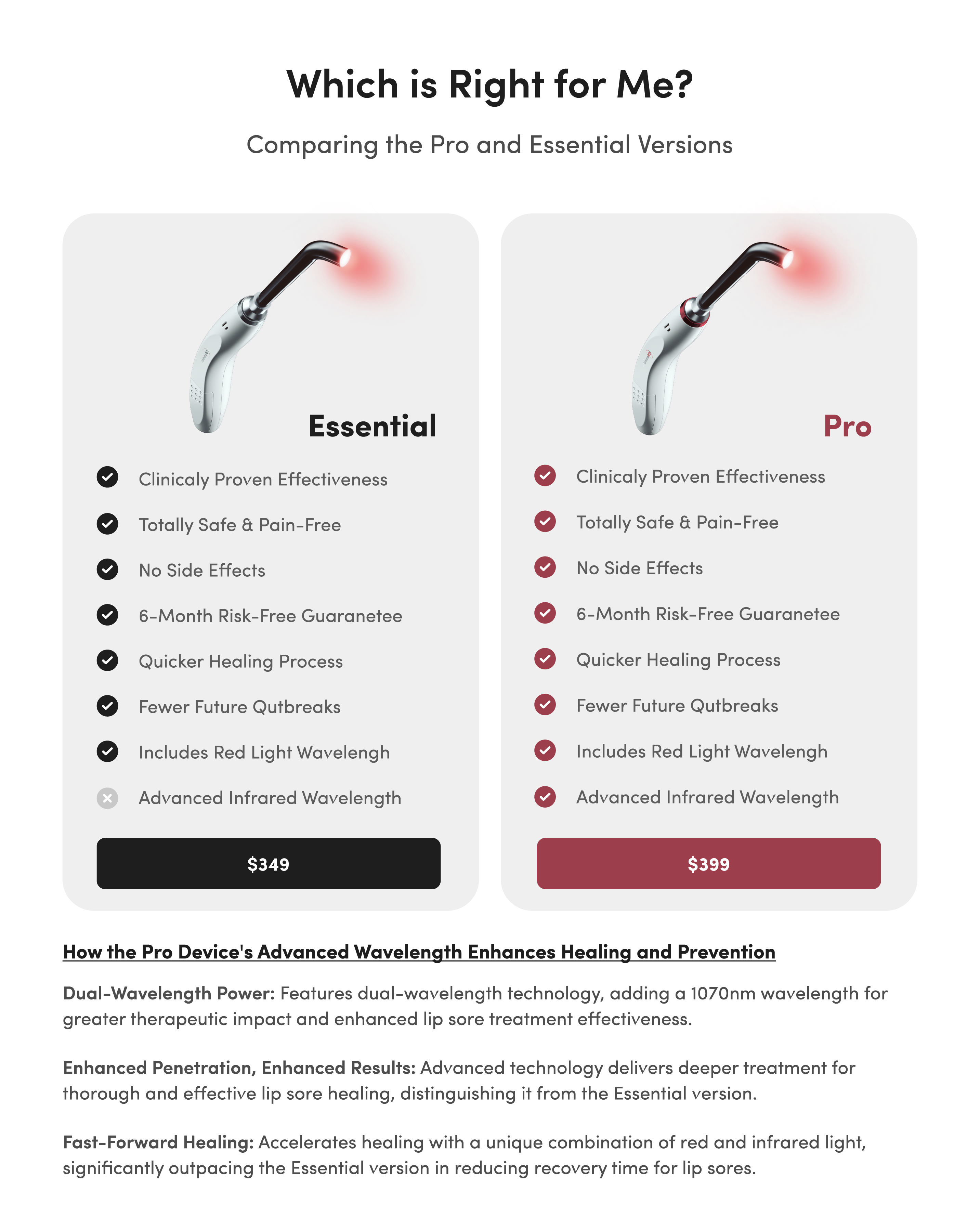Cold Sore vs. Pimple: How to Tell the Difference

Cold Sore Example (Left); Pimple Example (Right)
A cold sore or pimple can make you feel uncomfortable or embarrassed, and both can affect your appearance. We understand your concern and want to help treat the issue as quickly and effectively as possible. While pimples and cold sores both have similarities, these unwanted blemishes feature distinct differences. When finding the right treatment for a cold sore vs. a pimple, knowing how to identify each will help you to find the quickest and most effective solution.
Cold Sore vs. Pimple: Definitions
First, a quick answer to an important question, "Are cold sores like pimples?" The answer is sometimes, and it can understandably make it harder to identify which problem you are experiencing.
Cold sores are clear fluid-filled irritations, whereas pimples have yellowish or white pus inside. The differences in their contents result from the cause of each issue.
In many instances, a dermatologist or doctor can quickly identify a pimple by simply looking at it. However, they may rule out acne and suspect you suffer from cold sores, also known as fever blisters, based on the based on symptoms associated with each. In some cases, your physician may want to take a biopsy or do a viral culture to verify that you have a cold sore.
Both form on the face, but cold sores tend to cluster around your bottom lip or inside your mouth. Pimples can happen anywhere on your face or back. They often occur singly instead of in groups.
The main ways to differentiate between a cold sore vs pimple relate to the variations in formation, sensations, appearance, and healing.
Differences in Formation Between Cold Sores and Pimples
The most important distinction between a cold sore and pimple is their cause. A cold sore occurs from the highly contagious Herpes Simplex Virus (HSV) Type 1. More than half of the American population has HSV-1 in their body, and this form of the virus accounts for 80% of cold sores. Type 2 herpes, more commonly known simply as herpes, is the form that causes genital irritation, but it can also cause cold sores in some cases. Even if you have never had a cold sore, you could become exposed to the virus, which could lead to cold sores in the future.
To spread HSV-1, you need only come into physical contact with someone who has an active cold sore or something that previously touched a cold sore. For instance, kissing, sharing food or drinks, using the same toothbrush, or borrowing cosmetics can all result in HSV-1 transmission.
After exposure, you may never experience a cold sore, but it is likely that you will. Some situations or environmental factors can trigger an outbreak, such as fever, stress, illness, menstruation, or sunlight. Experiencing these triggers with HSV-1 in your body leads to the formation of cold sores.
Pimples do not have viral origins. In fact, these spots come from inflammation that occurs when an oil gland experiences a bacterial infection. This inflammation may happen from oil getting clogged along a hair follicle, where it becomes infected. The bacteria cause the distinctive pus found inside pimples.
While pimples most frequently appear in teenagers, people of any age can develop a pimple or acne that leads to multiple pimple outbreaks. For some people, pimple triggers may include not washing their face after using makeup, hormonal changes from puberty or pregnancy, stress, or the use of certain medications. Washing your face regularly to remove excess oil that could clog pores can prevent pimple formation.
When it comes to cold sore vs. pimple transmission, cold sores can be highly contagious whereas you likely will not spread pimples to others unless they somehow touch a pimple you recently popped.
These differences in formation mean that cold sores and pimples feel and look different from each other. They also have separate healing methods to treat the virus or the bacteria at the root.
The Differences in feeling between a Cold Sore and Pimple
The signs that cold sores and pimples are forming can be very similar. Many people may feel nothing during formation; however, some will feel tingling when developing either a pimple or cold sore. The tingling sensation is where the similarities in formation generally end.
Unlike a pimple, which rarely produces more than a minor tingling as it forms, a cold sore can cause tingling at the lowest levels of sensation. Some people will feel itching or burning from a cold sore, making this problem much more painful than a pimple. Effective treatment can quickly ease this pain.
Cold sore is always painful. Pimple may or may not be associated with pain. Mucosal symptoms are associated with cold sores which are never present in acne (Reference).
Differences and Similarities in Appearance
Both a pimple and cold sore appear as areas of red inflammation. But because these two generally form in different locations and have some dissimilarities in appearance, you can often distinguish a cold sore vs pimple by looking at each.
First, a cold sore tends to appear with others in a cluster around your lips or inside the edges of your mouth. These sores will look like fluid-filled blisters. Over time, the blisters will pop to create painful cold sores. As healing progresses, the liquid that drains from the blisters will dry out and the sores will create scabs that eventually disappear after two to four weeks when left untreated.
Pimples may have a red area that looks raised. The inflammation will rise as the inside of the pimple fills with pus and the infection develops inside. If you leave the pimple alone, it will drain itself and the skin will eventually heal of the redness and inflammation after several weeks to a month.
Healing of Cold Sores and Pimples
Since a cold sore happens from a viral infection and a pimple occurs from bacteria, treatment will focus on fighting each separate pathogen.
For treating pimples, you can use an over-the-counter cleaning agent, cream, gel, or lotion that contains clindamycin or benzoyl peroxide. This antibacterial substance kills the bacteria, removes dead skin cells, and clears out excess oil. Some people will use over-the-counter preparations that include salicylic acid instead. This substance helps to open pores, which prevents them from clogging and becoming infected.
Cold sores do not currently have a long-lasting cure. However, there are treatment options that can shorten the healing time of the sores on your face. You may try using prescription antivirals from your doctor in lotion, pill, or cream form. For best results without a prescription, we recommend using our new product, the Luminance RED, which can shorten which can reduce pain, inflammation, and redness associated with the cold sore and help promote tissue repair. with LED light technology.
Use an FDA-Registered, Proven Treatment Method for Cold Sore Care
If you have a cold sore, you may have tried mostly ineffective, over-the-counter products in the past. Today a much more effective, LED low-intensity laser therapy exists, and the technology behind the Luminance RED device has proven to work in clinical studies. These studies have shown a 77% reduction in pain and a 49% faster healing time compared to a placebo or no treatment.
The FDA registered the Luminance RED as a Class II medical device, and it is manufactured in a facility registered with the FDA. The government oversight of both the device and its production process ensures you receive a tested, proven method for treating your cold sores.
If you have any questions about using Luminance RED for your cold sore treatment, visit our FAQ page. To try this device for yourself, visit our store today.


